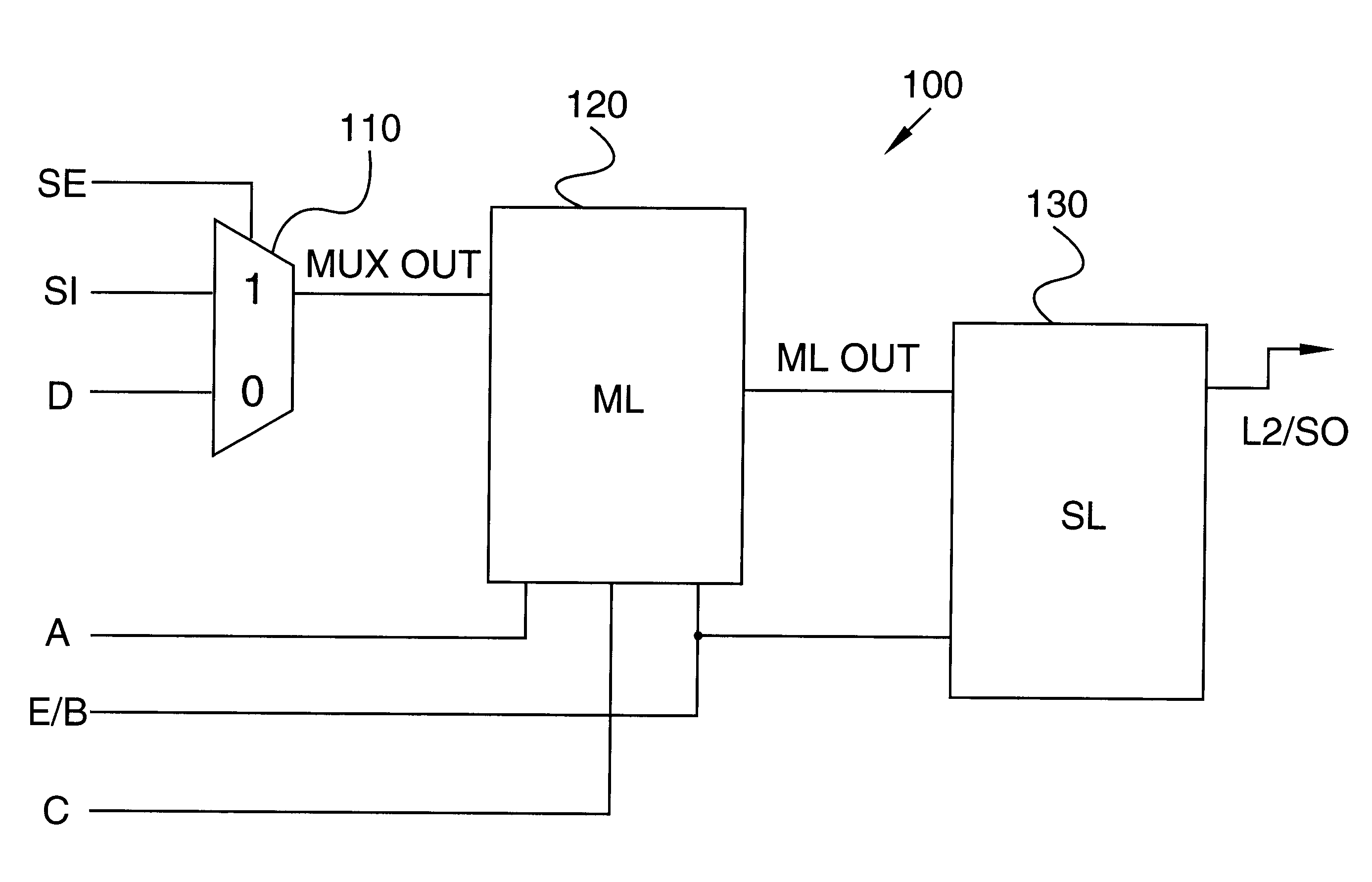Low power LSSD flip flops and a flushable single clock splitter for flip flops
a flip flop and flip flop technology, applied in the field of low power lssd flip flops and a flushable single clock splitter for flip flops, can solve the problems of certain problems associated with dff apparatuses
- Summary
- Abstract
- Description
- Claims
- Application Information
AI Technical Summary
Problems solved by technology
Method used
Image
Examples
Embodiment Construction
As discussed above, the preferred embodiments of the present invention relate to flip flop apparatuses. A more complete discussion of the problems associated with these flip flop apparatuses follows in the Overview section. Because of the particular problems associated with these apparatuses, the Overview section is important in order to best understand the benefits and advantages of the present invention, as well as how the present invention solves these problems.
1. Overview
Returning to FIGS. 8, 9 and 10, during normal operation the Level Sensitive Scan Design (LSSD) A, B and C clocks are held at particular logic values (low, high and high logic values, respectively). When operated using the Edge (E) clock input, the apparatuses of FIGS. 9 and 10 consume more power than does the apparatus of FIG. 8.
Any transition of the E clock input, in FIGS. 9 and 10, causes a transition at the output of each of the four gates in the clock splitter 940. Furthermore, if one clock splitter 940 is s...
PUM
 Login to View More
Login to View More Abstract
Description
Claims
Application Information
 Login to View More
Login to View More - R&D
- Intellectual Property
- Life Sciences
- Materials
- Tech Scout
- Unparalleled Data Quality
- Higher Quality Content
- 60% Fewer Hallucinations
Browse by: Latest US Patents, China's latest patents, Technical Efficacy Thesaurus, Application Domain, Technology Topic, Popular Technical Reports.
© 2025 PatSnap. All rights reserved.Legal|Privacy policy|Modern Slavery Act Transparency Statement|Sitemap|About US| Contact US: help@patsnap.com



